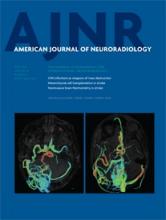Abstract
SUMMARY: MR perfusion imaging is becoming an increasingly common means of evaluating a variety of cerebral pathologies, including tumors and ischemia. In particular, there has been great interest in the use of MR perfusion imaging for both assessing brain tumor grade and for monitoring for tumor recurrence in previously treated patients. Of the various techniques devised for evaluating cerebral perfusion imaging, the dynamic susceptibility contrast method has been employed most widely among clinical MR imaging practitioners. However, when implementing DSC MR perfusion imaging in a contemporary radiology practice, a neuroradiologist is confronted with a large number of decisions. These include choices surrounding appropriate patient selection, scan-acquisition parameters, data-postprocessing methods, image interpretation, and reporting. Throughout the imaging literature, there is conflicting advice on these issues. In an effort to provide guidance to neuroradiologists struggling to implement DSC perfusion imaging in their MR imaging practice, the Clinical Practice Committee of the American Society of Functional Neuroradiology has provided the following recommendations. This guidance is based on review of the literature coupled with the practice experience of the authors. While the ASFNR acknowledges that alternate means of carrying out DSC perfusion imaging may yield clinically acceptable results, the following recommendations should provide a framework for achieving routine success in this complicated-but-rewarding aspect of neuroradiology MR imaging practice.
ABBREVIATIONS:
- AIF
- arterial input function
- DCE-MRI
- dynamic contrast-enhanced MR imaging
- ΔR2
- change in relaxivity
- GBCA
- gadolinium-based contrast agents
- GRE
- gradient-echo
- Ktrans
- volume transfer constant
- PSR
- percentage of signal-intensity recovery
- rCBV
- relative CBV
- SE
- spin-echo
- Tmax
- time-to-maximum
- nrCBV
- normalized rCBV
- © 2015 by American Journal of Neuroradiology












